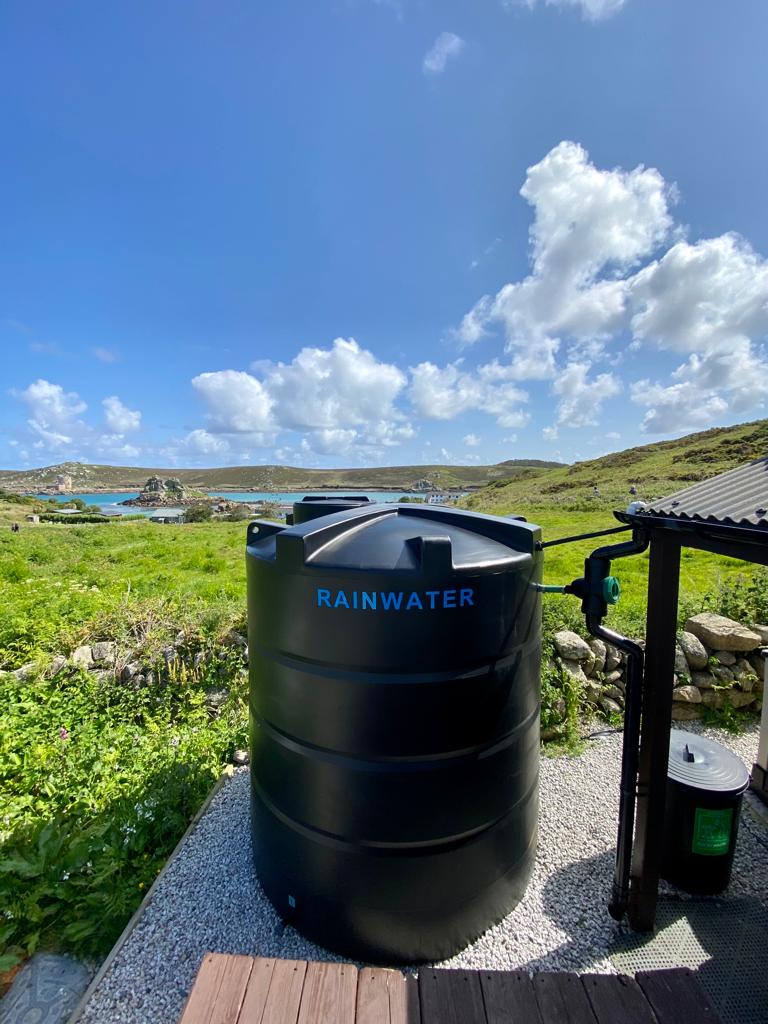The Isles of Scilly, situated 28 nautical miles south west of Land’s End, Cornwall, comprise approximately 200 low-lying granite islands and rocks, with a population of roughly 2,200, the majority of whom live on the island of St Mary’s.
The islands are one of the most vulnerable areas of the Less Developed Area of the UK to the impacts of climate change, including to drought and water shortages. Due to their remote location, they have no connection to the UK mainland water supply systems. The Islands rely, therefore, on the supply of desalinated seawater for their drinking water; the desalination plant can produce only a limited amount of water and involves a high cost, energy intensive process.
The potable water supply must cope with large fluctuations in demand; during the Summer the population increases by up to four times and, with hot sunny weather, the islands are exposed to extreme water stress.
The Council of the Isles of Scilly has an important leadership role at the centre of the sustainable development of the Islands’ community. The Council received £250,000 of funding from the European Regional Development Fund with the specific aim of helping businesses on the islands install rainwater harvesting systems. Sole trader businesses on the islands were invited to apply for grants, which also required a contribution from the owners.

WHAT WE DID
SDS was required to replace as much of businesses’ non-potable water consumption as possible with recycled rainwater. This involved the provision of a full-service solution comprising the design, detailed specification, consenting, manufacture/sourcing and supply, transportation and installation of rainwater harvesting and storage systems.
SDS worked with businesses to define the modifications needed to their internal plumbing to enable them to fully use harvested and stored rainwater. We visited each of the proposed premises and advised on the location of sites, styles and sizes of rainwater harvesting tanks to be installed.
Each tank is connected to as many downpipes as feasible at the property. An overflow ensures that rainwater in excess of the tanks’ capacity will be directed to existing stormwater disposal systems.
Although the rainwater harvested by the installed systems is for non-potable use only, a filter on the tank inlet removes any solid matter including vegetation, soil and other materials from the rainwater entering the tank. A rodent barrier is also fitted to the overflow outlet of the tank.
RESULTS
Ten rainwater harvesting systems, with a combined capacity of almost 250,000 litres, have been installed on St Mary’s and the remainder on four of the off-islands of St Agnes, Bryher, Tresco and St Martin’s. Due to constrained space in which to site the tanks, the majority of these have been installed above-ground.
SDS undertook all roles and responsibilities of the Principal Contractor as defined under CDM regulations, in this case satisfying the restrictions of working on a small island environment.
This included travel and accommodation for staff along with mainland and inter-island freight transport for the hardware and tools, as well as obtaining consents and permits such as consent to install, permits to dig/service clearance and crane permits/lifting plans where required.
All water fittings comply with the Water Supply (Water Fittings) Regulations 1999, the Building Regulations 2010 Part G (as amended) and Part H, British Standard BS EN 16941-1:2018 Rainwater Harvesting Systems Code of Practice, and all work with relevant guidance, regulations and legislation in force.
Download the Isles of Scilly Businesses Case Study.
For more information on SDS rainwater harvesting and recycling systems get in touch now.





